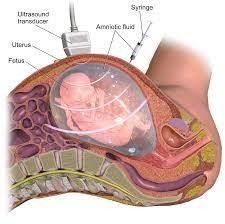A nurse working on a postpartum unit is collecting data from four clients. Which of the following findings should the nurse report to the provider?
A client who has a reddened area on their right calf
A client who reports painful uterine contractions during breastfeeding
A client who has a urinary output of 125 mL in 4 hr
A client who reports changing their perineal pad every 2 hr
The Correct Answer is C
A) Incorrect- A reddened area on the calf might indicate a potential blood clot (deep vein thrombosis), which is important to assess but may not be the highest priority.
B) Incorrect- Painful uterine contractions during breastfeeding can be a normal response due to oxytocin release during breastfeeding and might not require immediate reporting.
C) Correct - A urinary output of 125 mL in 4 hours is significantly low and could indicate inadequate fluid intake, potential urinary retention, or other issues that need prompt attention. It is a sign of impaired renal function. This could indicate dehydration, blood loss, infection, or kidney injury. The nurse should assess the client's fluid intake and output, vital signs, urine specific gravity, and serum electrolyte levels. The nurse should also monitor the client for signs of hypovolemia, such as tachycardia, hypotension, and decreased skin turgor.
D) Incorrect- Changing a perineal pad every 2 hours is within the normal range for postpartum bleeding and might not require immediate reporting.
Nursing Test Bank
Naxlex Comprehensive Predictor Exams
Related Questions
Correct Answer is C
Explanation
A) Incorrect- Leakage of fluid is possible but not a primary focus of post-procedure instructions.
B) Incorrect- Milk of magnesia is not relevant to an amniocentesis procedure.
C) Correct - Reporting uterine contractions after the procedure is important as it could indicate a potential complication, such as preterm labor.
D) Incorrect- Blood work drawn before the procedure is not typically part of the amniocentesis process.

Correct Answer is A
Explanation
A) Correct - Chronic hypertension is a significant risk factor for developing preeclampsia during pregnancy. Preeclampsia is characterized by high blood pressure and organ damage, typically occurring after 20 weeks of pregnancy.
B) Incorrect- Maternal age of 30 years is not a specific risk factor for preeclampsia.
However, maternal age over 40 is considered a risk factor.
C) Incorrect- A prepregnancy BMI of 19 falls within the healthy weight range and is not typically associated with an increased risk of preeclampsia.
D) Incorrect- Having a third pregnancy is not inherently a strong risk factor for preeclampsia. Women experiencing their first pregnancy are at a slightly higher risk.

Whether you are a student looking to ace your exams or a practicing nurse seeking to enhance your expertise , our nursing education contents will empower you with the confidence and competence to make a difference in the lives of patients and become a respected leader in the healthcare field.
Visit Naxlex, invest in your future and unlock endless possibilities with our unparalleled nursing education contents today
Report Wrong Answer on the Current Question
Do you disagree with the answer? If yes, what is your expected answer? Explain.
Kindly be descriptive with the issue you are facing.
